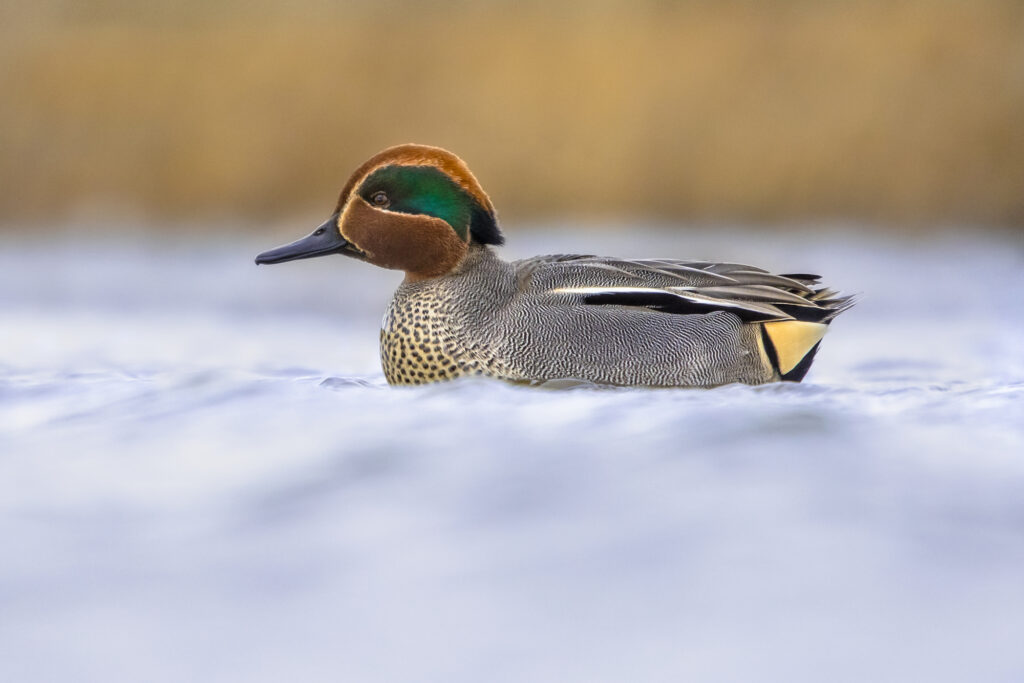Ducks might not be the first bird you think of when you think about birdwatching in Nevada. But there are actually plenty of ducks that can be encountered in this state.
Mallard
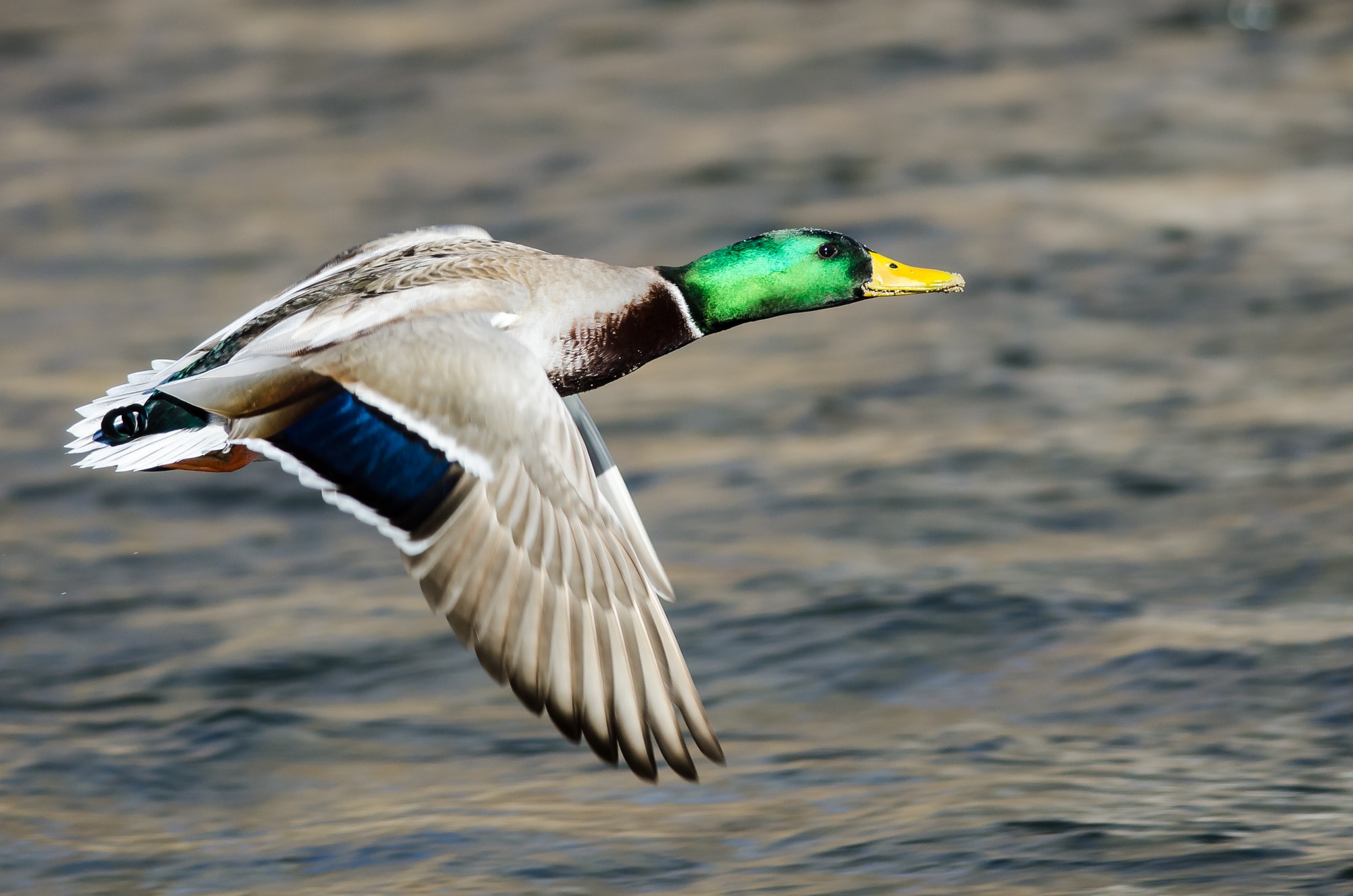
- Anas platyrhynchos
- Length: 19.7 – 25.6 in (50 – 65 cm)
- Weight: 35.3 – 45.9 oz (1000 – 1300 g)
- Wingspan: 32.3 – 37.4 in (82 – 95 cm)
Mallards are perhaps the most recognized of all duck species, and some may think of them as the quintessential duck species. They are spotted by birdwatchers in this state most frequently in winter but are also a common sighting in the summer.
Gadwalls
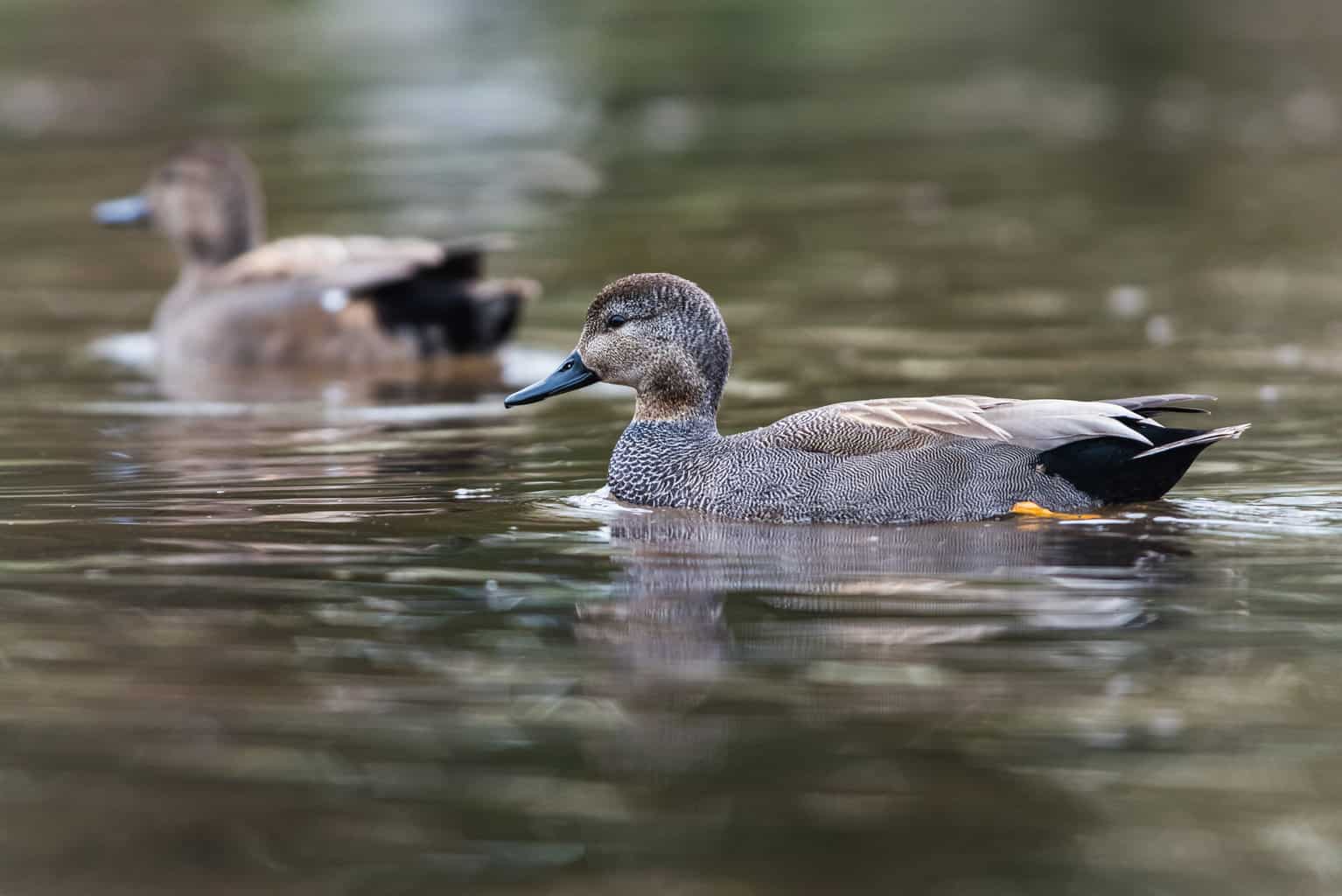
- Mareca strepera
- Length: 19 – 23 in (48 – 58 cm)
- Weight: 35.27 oz (1000 g)
- Wingspan: 31 – 36 in (79 – 91 cm)
You can spot gadwalls in Nevada throughout the whole of the year. However, the best time to spot them is between October and mid-May. They are spotted around twice as often in winter as they are during the summer months.
Northern Shovelers

- Spatula clypeata
- Length: 17.3 – 20.1 in (44 – 51 cm)
- Weight: 14.1 – 28.9 oz (400 – 820 g)
- Wingspan: 27.2 – 33.1 in (69 – 84 cm)
Though it is possible to see these ducks year-round, you are most likely to encounter them during the winter, between September and April. You are more than five times more likely to spot these ducks in Nevada in the winter than you are during the summer months.
Cinnamon Teal
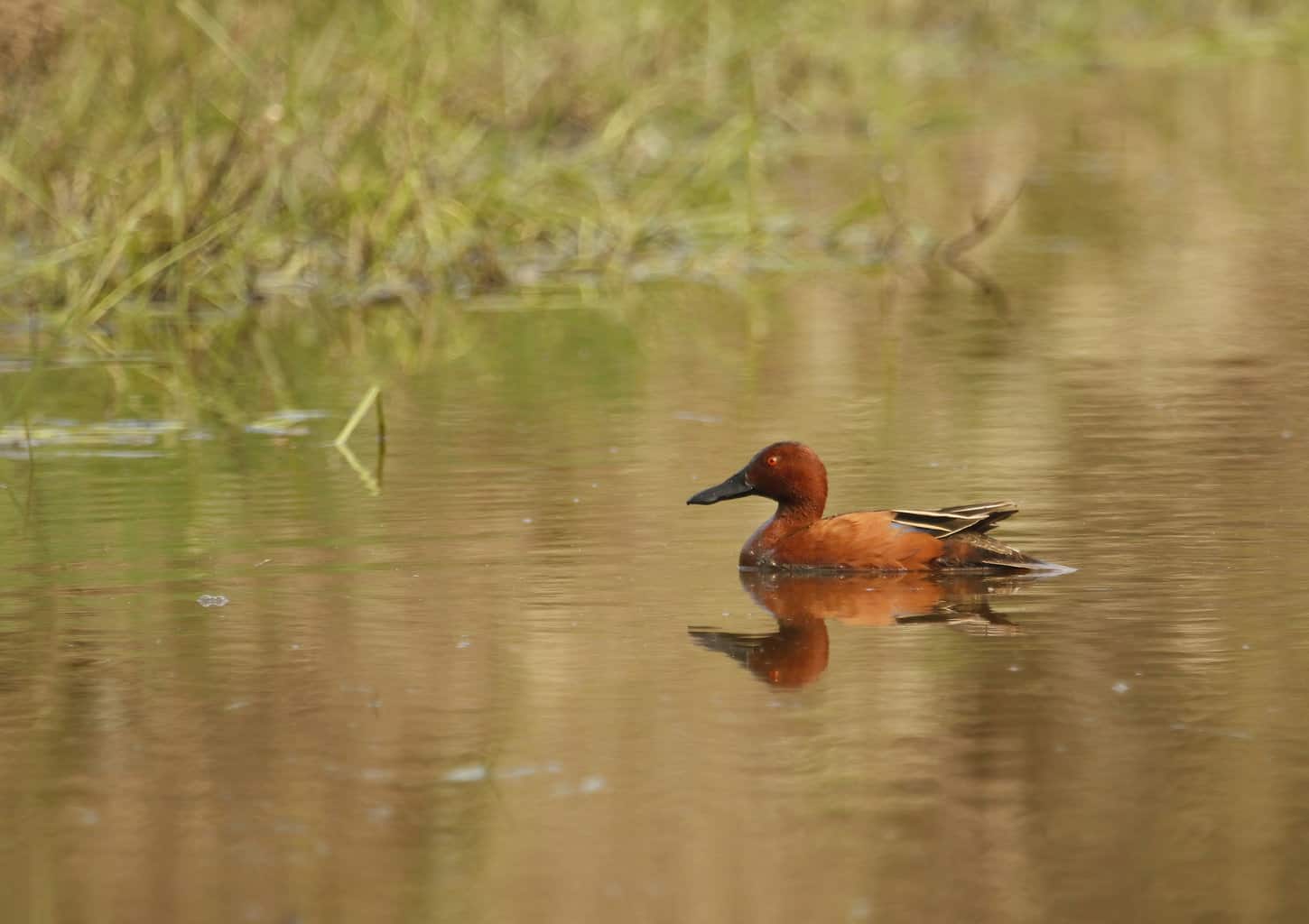
- Spatula cyanoptera
- Length: 14 – 17 in (36 – 43 cm)
- Weight: 16.4 oz (465 g)
- Wingspan: 24 – 30 in (61 – 76 cm)
Seen in Nevada year-round, the cinnamon teal is named for the hue of the breeding males. Nonbreeding males and females are mostly brown. To spot these ducks in Nevada, you will need to find freshwater marshes and ponds, where these ducks dabble in the shallow water.
Green-Winged Teal
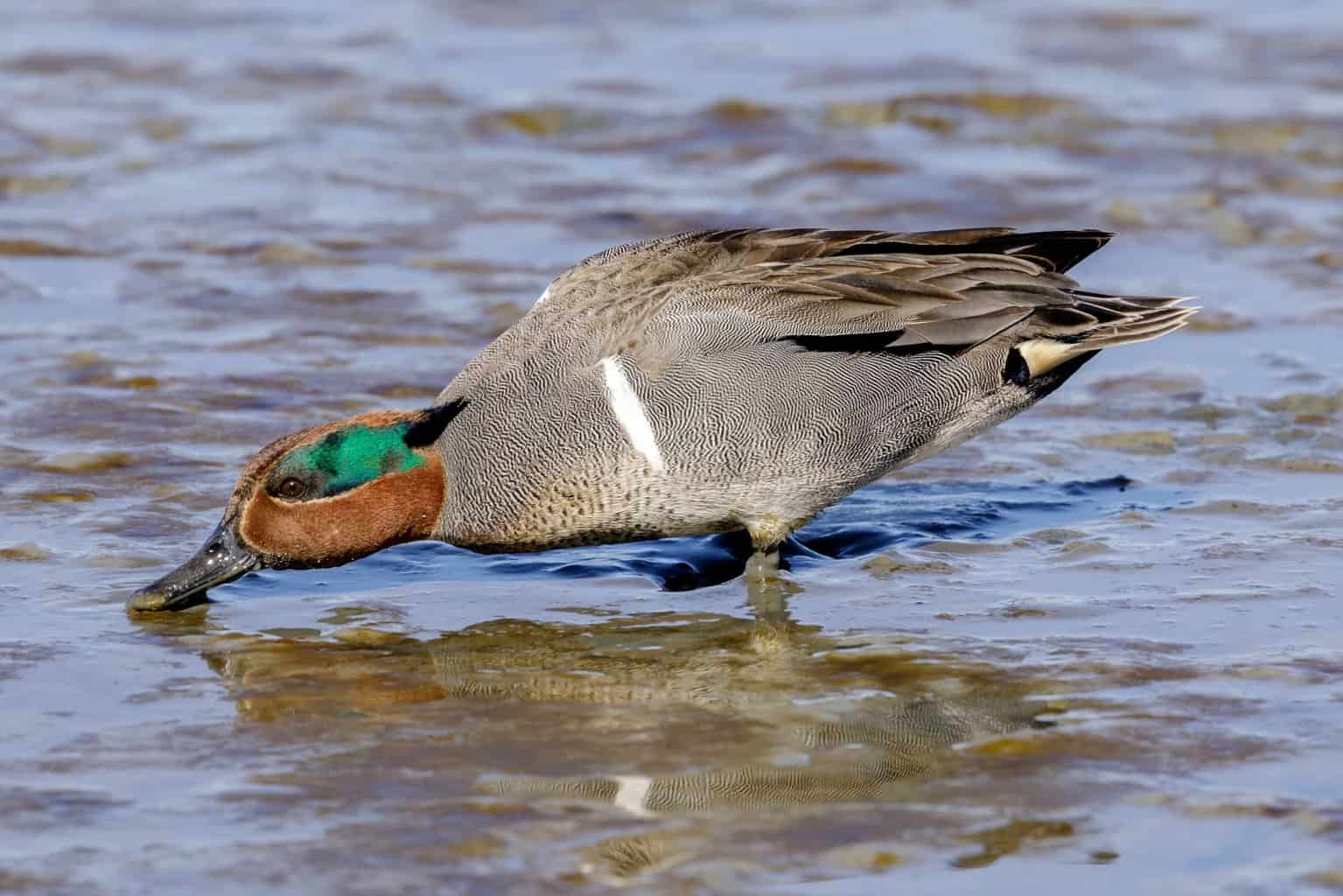
- Anas crecca
- Length: 12.2 – 15.3 in (31 – 39 cm)
- Weight: 4.9 – 17.6 oz (140 – 500 g)
- Wingspan: 20.5 – 23.2 in (52 – 59 cm)
Green-winged teals have been spotted in Nevada year-round. However, they are much less commonly spotted in the summer and are spotted far more frequently between October and April. You can find these ducks in large flocks on flooded ground and in shallow ponds, feeding on invertebrates and seeds.
American Wigeon

- Mareca americana
- Length: 16.5 – 23.2 in (42 – 59 cm)
- Weight: 19.1 – 46.9 oz (540 – 1330 g)
- Wingspan: 33.1 in (84 cm)
These ducks have also been known to hang out in Nevada year-round. But they are most frequently recorded as having been spotted between October and April. You can find them feeding on vegetation in and near water, and also eating invertebrates.
Northern Pintail
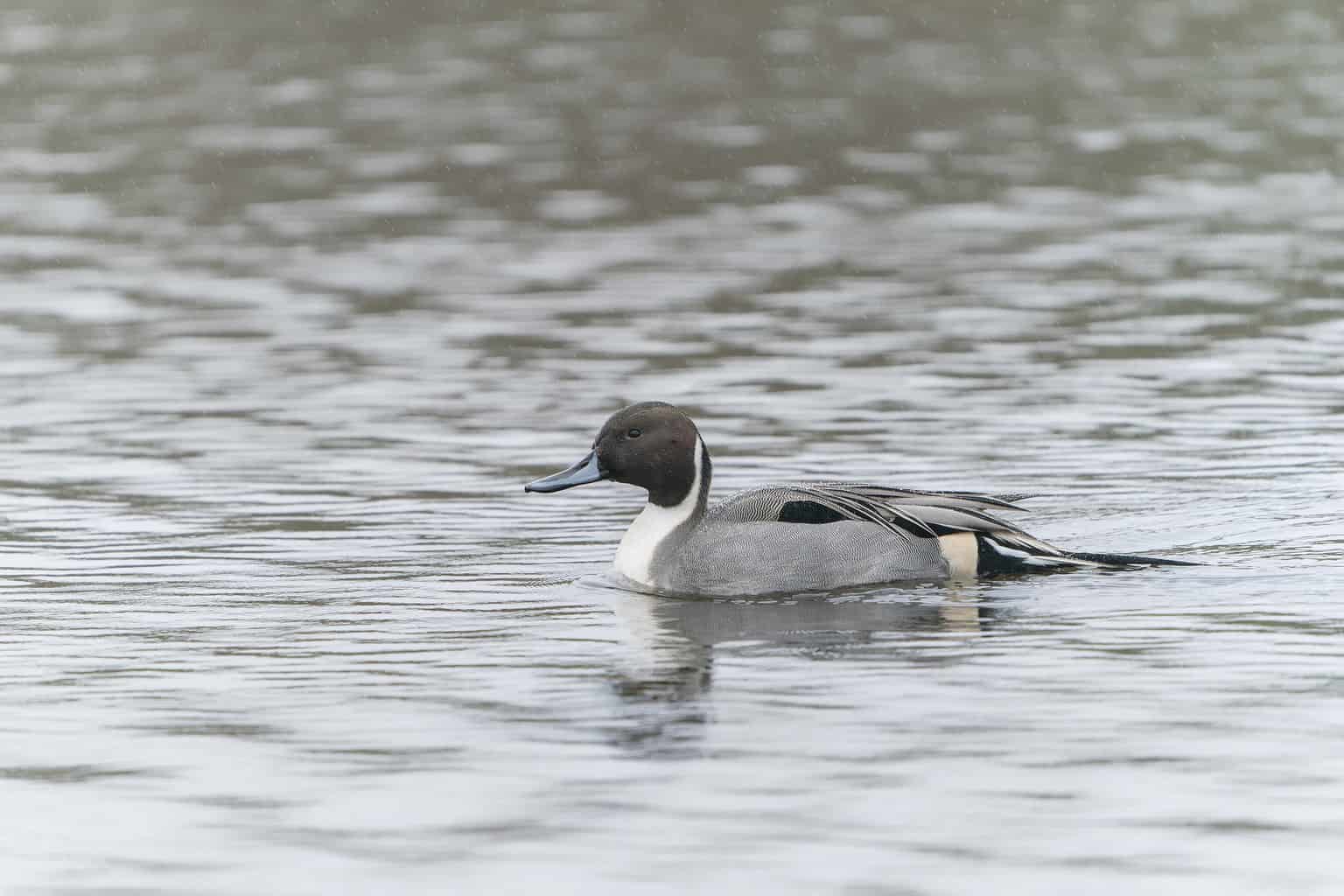
- Anas acuta
- Length: 20 – 26 in (51 – 66 cm)
- Weight: 36.33 oz (1030 g)
- Wingspan: 29 – 35 in (74 – 89 cm)
Northern pintails can be spotted in Nevada throughout the whole of the year. Though, again, they are most frequently spotted during the cooler months in this state. They are often found alongside other duck species in open wetlands, prairies, and agricultural farmlands. But in winter, they will most commonly migrate from inland regions to blackish marshes and coastal lagoons.
Wood Ducks
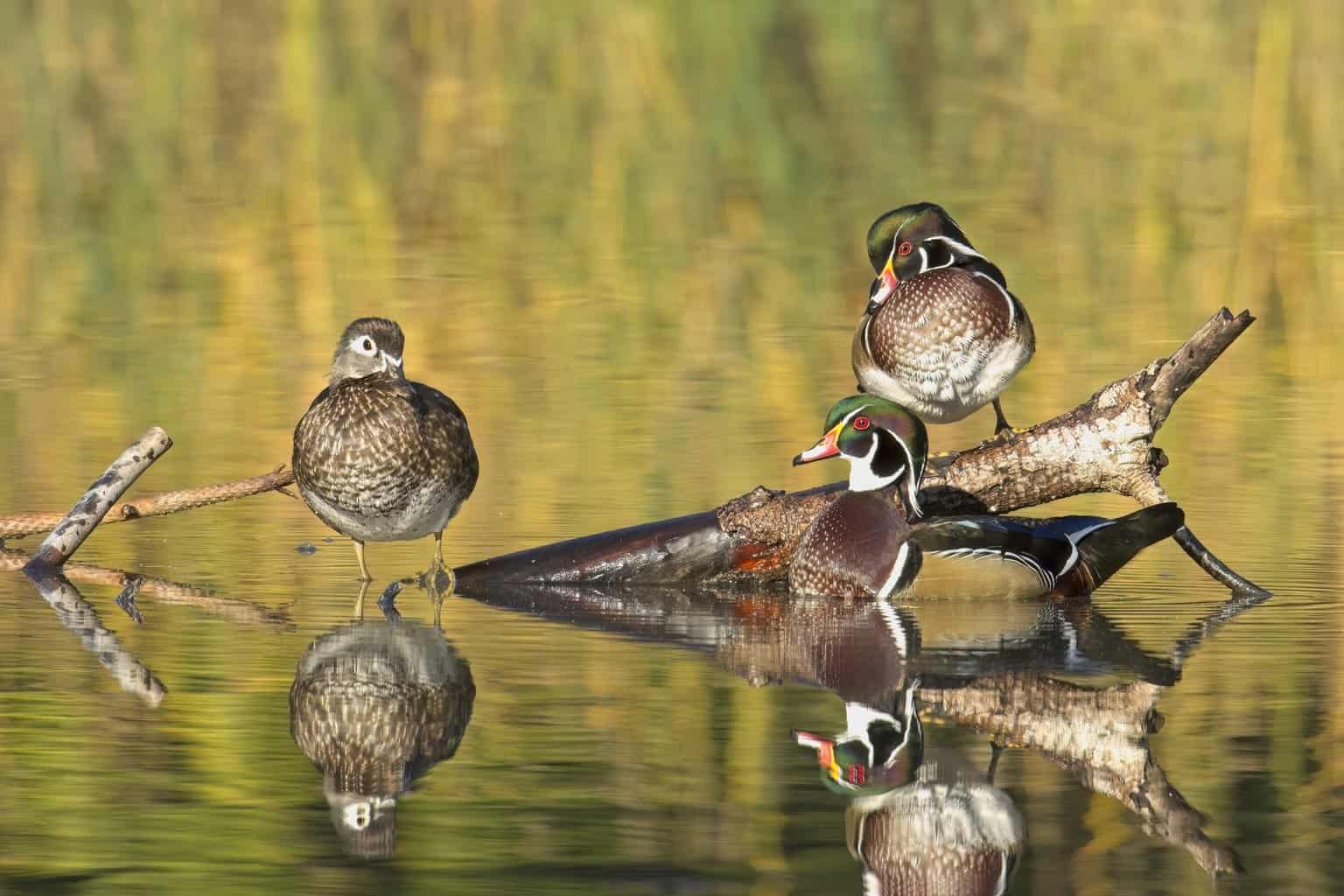
- Aix sponsa
- Length: 18.5 – 21.3 in (47 – 54 cm)
- Weight: 16.0 – 30.4 oz (454 – 862 g)
- Wingspan: 26.0 – 28.7 in (66 – 73 cm)
You might see wood ducks in Nevada all year round, though they are seen just a little more frequently in the winter. They are encountered primarily in wooded swamps but also feed on land in fields and forest lands.
Blue Winged Teal
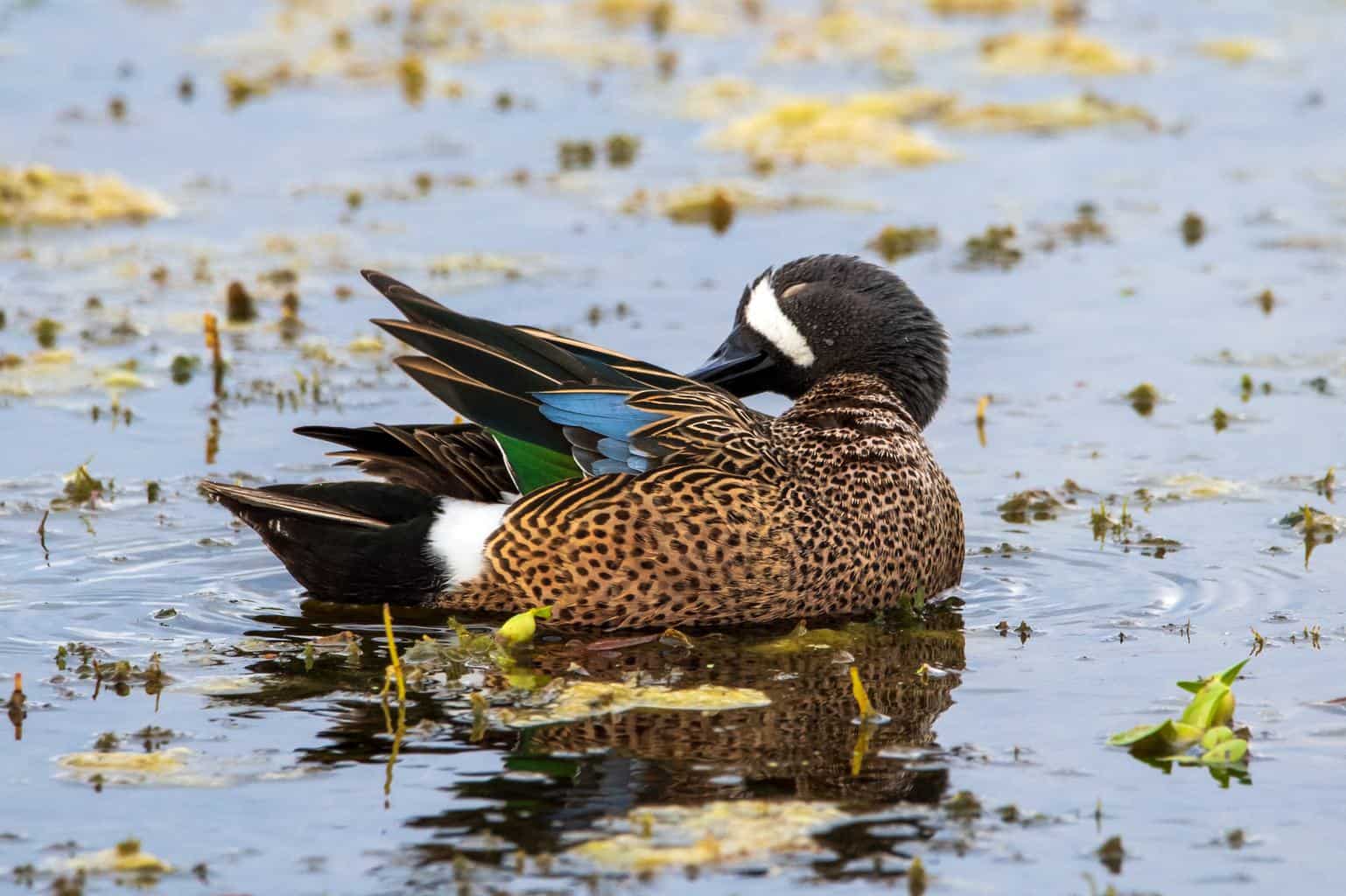
- Spatula discors
- Length: 15 – 17 in (38 – 43 cm)
- Weight: 19.18 oz (544 g)
- Wingspan: 23 – 31 in (58 – 79 cm)
These small ducks are most commonly spotted in Nevada during their migration, though there have been sightings all year round on occasion. These birds breed in the US and Canada before they migrate to the southwest coast, Mexico, Central and South America, the Gulf Coast, Florida, and the Caribbean.
Ruddy Duck
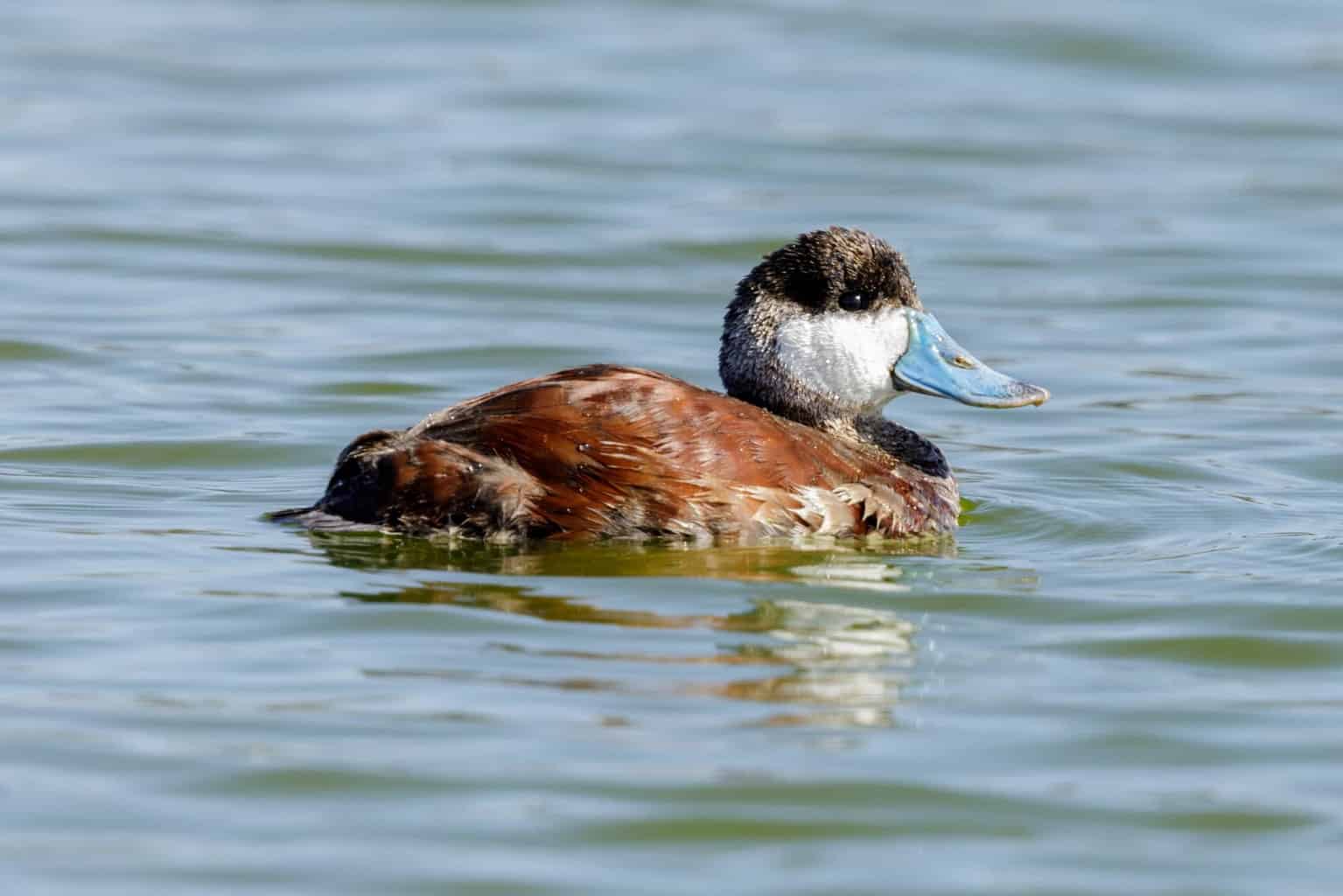
- Oxyura jamaicensis
- Length: 14 – 16 in (35.56 – 40.64 cm)
- Weight: 28.04 oz (795 g)
- Wingspan: 21 – 24 in (53 – 61 cm)
Ruddy ducks are most commonly seen in Nevada during the winter, though they can also be seen here in the summer and may remain year-round.
Redheads
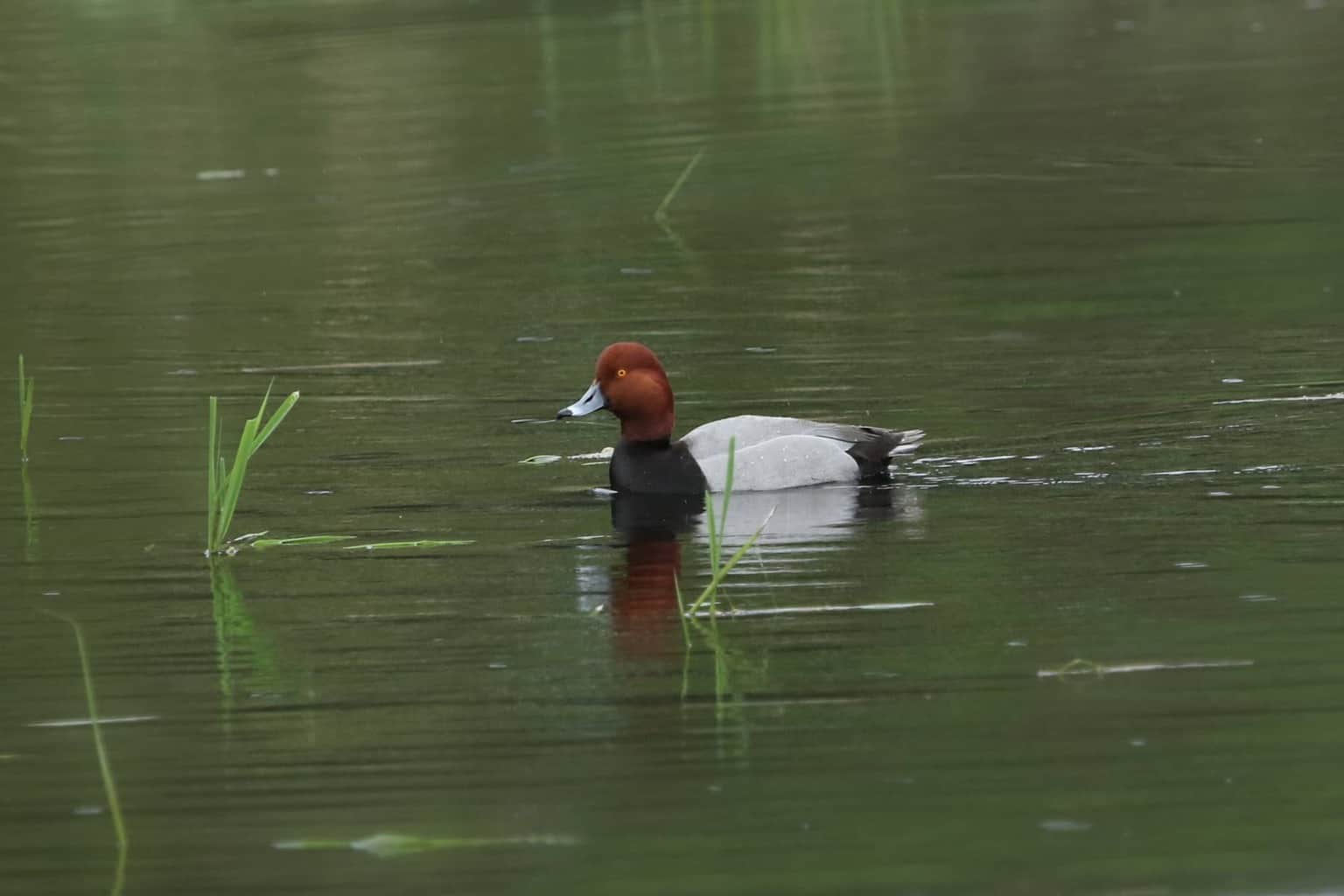
- Aythya americana
- Length: 18 – 22 in (46 – 56 cm)
- Weight: 43.03 oz (1219 g)
- Wingspan: 29 – 35 in (74 – 89 cm)
Redheads can also be found year-round in this state, and though they are not an uncommon sight in summer, they are also more frequently spotted during the coolest part of the year.
Ring-necked Ducks
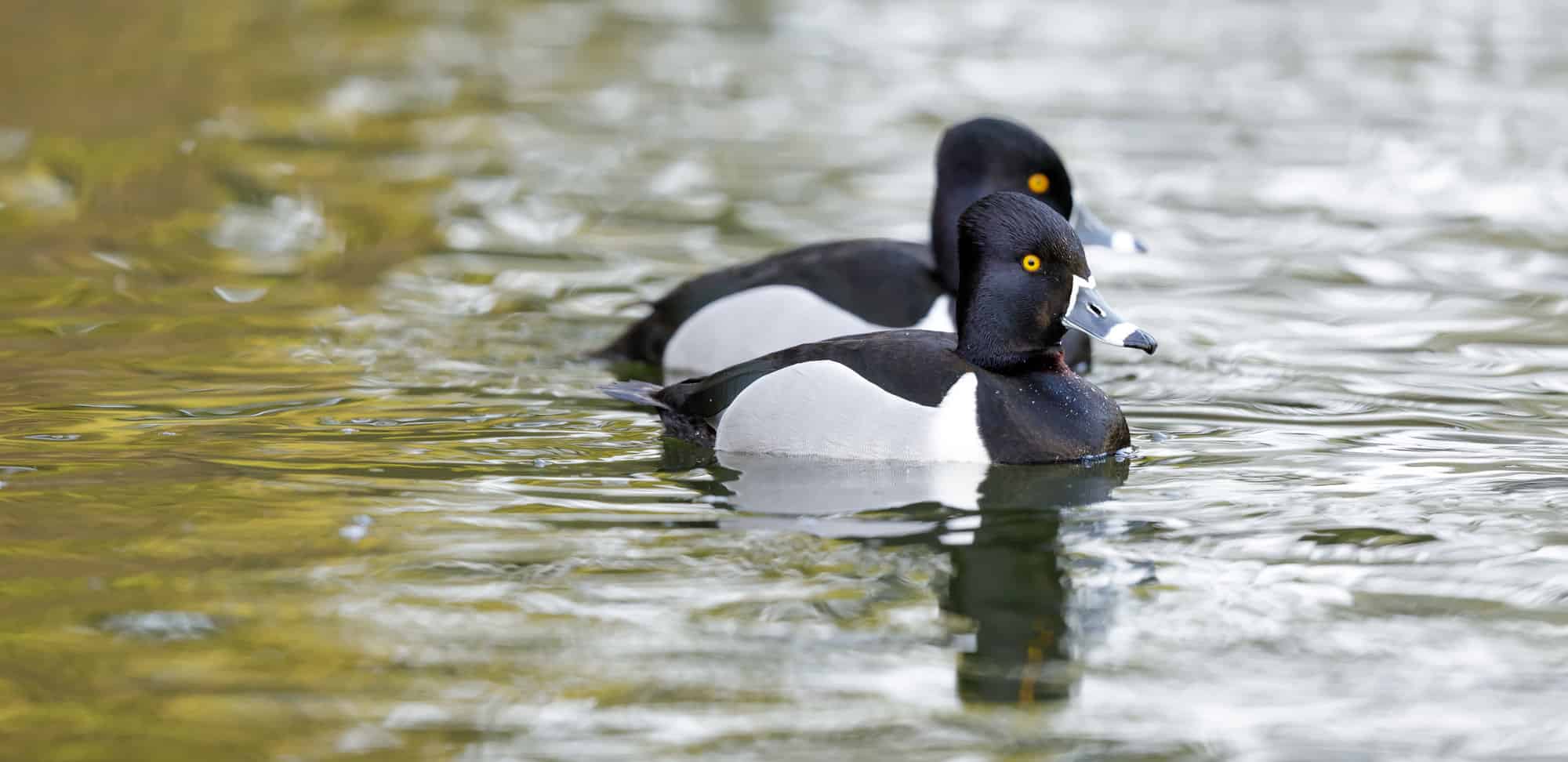
- Aythya collaris
- Length: 14 – 18 in (36 – 46 cm)
- Weight: 32.09 oz (909 g)
- Wingspan: 24 – 30 in (61 – 76 cm)
Ring-necked ducks are most commonly spotted in Nevada between October and April, though it is also possible to spot them outside of this period too. They like small shallow ponds and rivers, and wooded lakes in forests.
Buffleheads
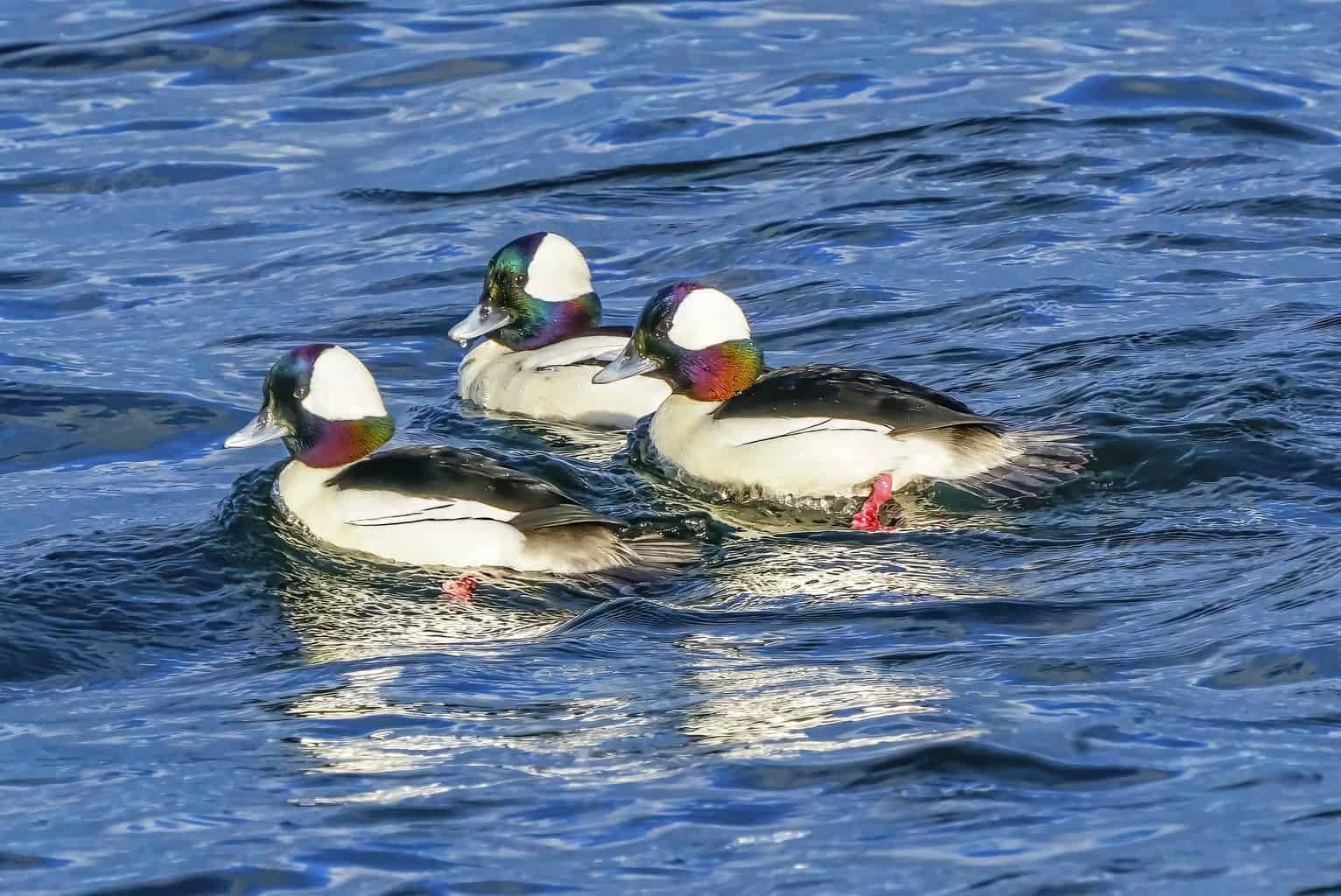
- Bucephala albeola
- Length: 13 – 16 in (33 – 41 cm)
- Weight: 21.16 oz (600 g)
- Wingspan: 20 – 24 in (51 – 61 cm)
Though some buffleheads may remain in Nevada year-round, you are most likely to see them in Nevada between October and April.
Lesser Scaup
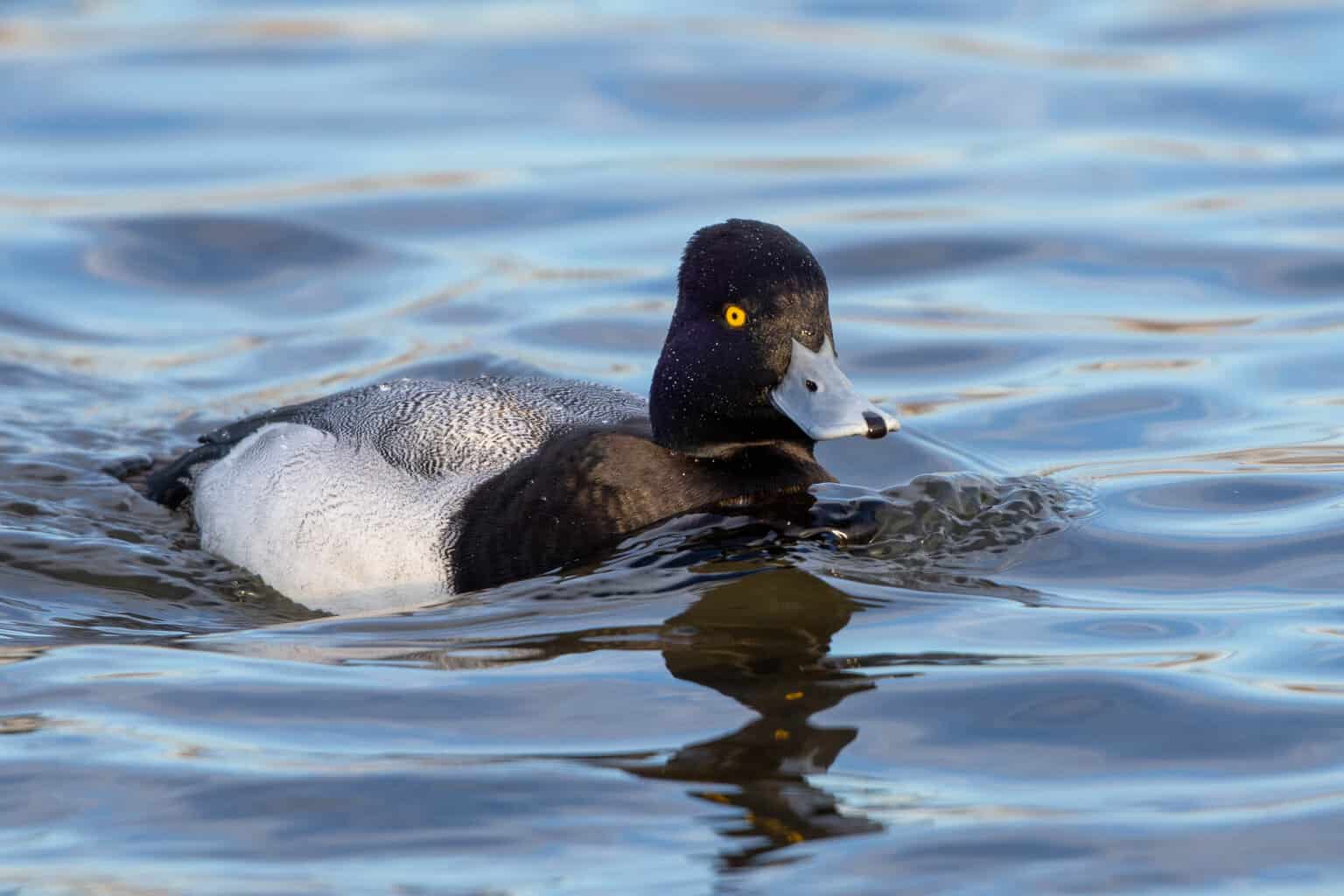
- Aythya affinis
- Length: 15 – 18 in (38 – 49 cm)
- Weight: 40.77 oz (1155 g)
- Wingspan: 24 – 33 in (61 – 84 cm)
Most commonly spotted in Nevada between November and April, Lesser Scaups have also been spotted here through the rest of the year. You may see many of these ducks congregating together on larger ponds or lakes.
Greater Scaup
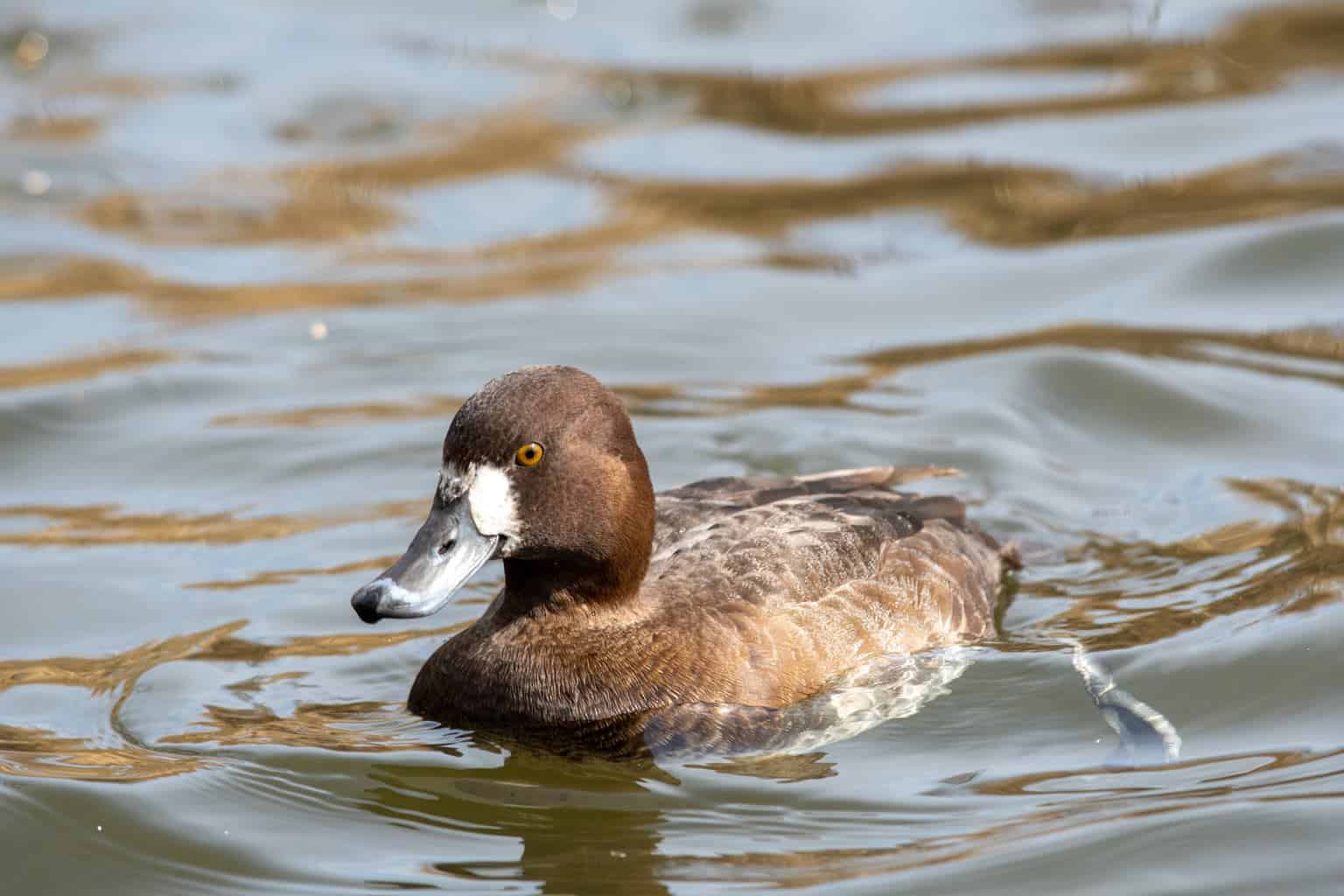
- Aythya marila
- Length: 15.3 – 22.1 in (39 – 56 cm)
- Weight: 25.6 – 48.0 oz (726 – 1360 g)
- Wingspan: 28.4 – 31.1 in (72 – 79 cm)
It is most common to see Greater Scaup in Nevada between October and April, though these birds are only seen on 1% of birdwatchers’ checklists from this state. These look very similar to the above, but have a more rounded head and lack the hair tufts of the lesser scaup males.
Canvasbacks
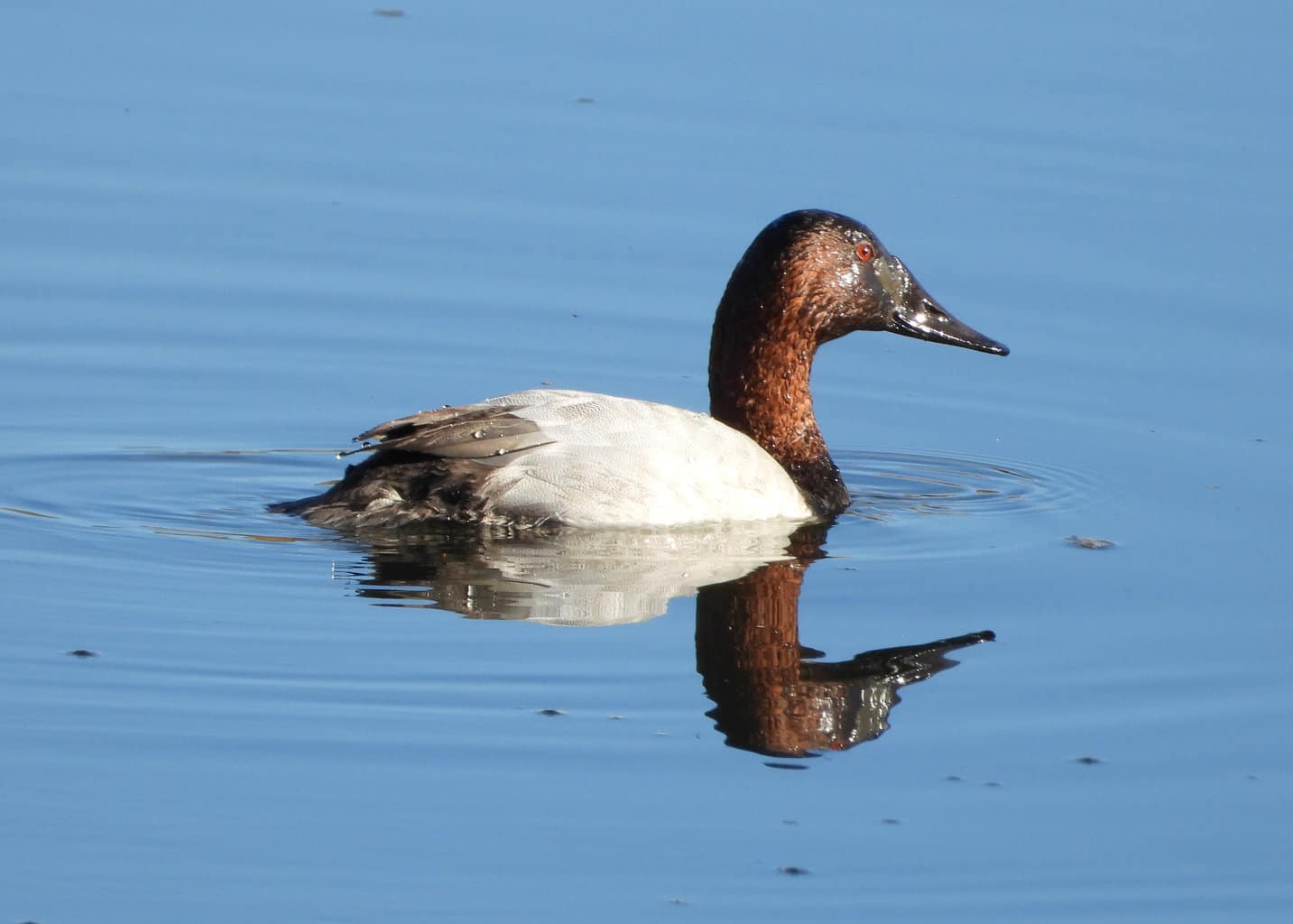
- Aythya valisineria
- Length: 19 – 24 in (48 – 61 cm)
- Weight: 58.48 oz (1657 g)
- Wingspan: 28 – 36 in (71 – 91 cm)
Canvasbacks typically remain in Nevada for the winter, between November and April, though some individuals may remain in the state year-round. You may see large gatherings of these birds, often alongside other ducks, on larger bodies of water.
Common Merganser
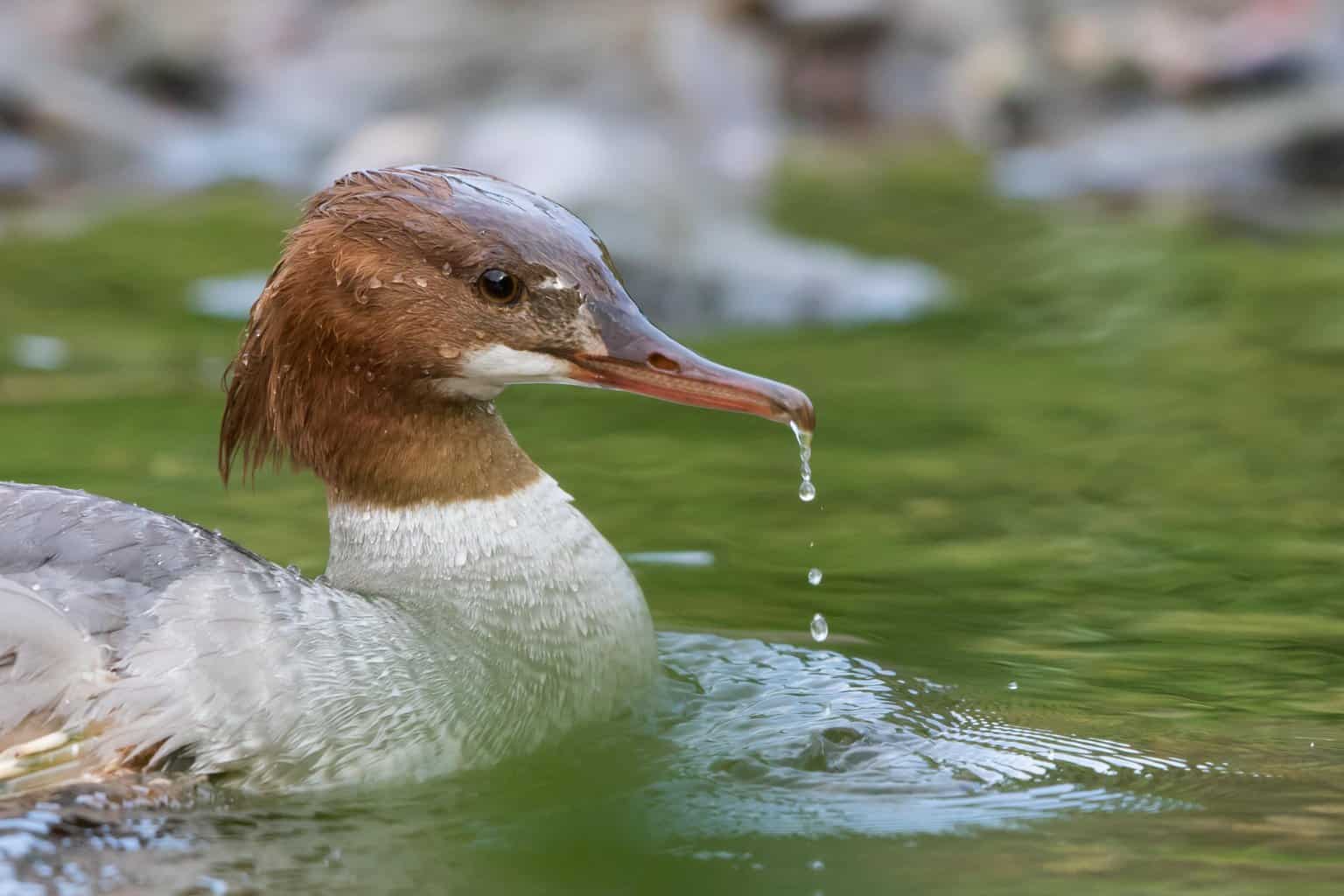
- Mergus merganser
- Length: 22 – 27 in (56 – 69 cm)
- Weight: 60.8 oz (1723 g)
- Wingspan: 31 – 37 in (79 – 94 cm)
Though sometimes spotted in Nevada throughout the whole year, it is most common to see them during the cooler months between November and April.
Hooded Merganser
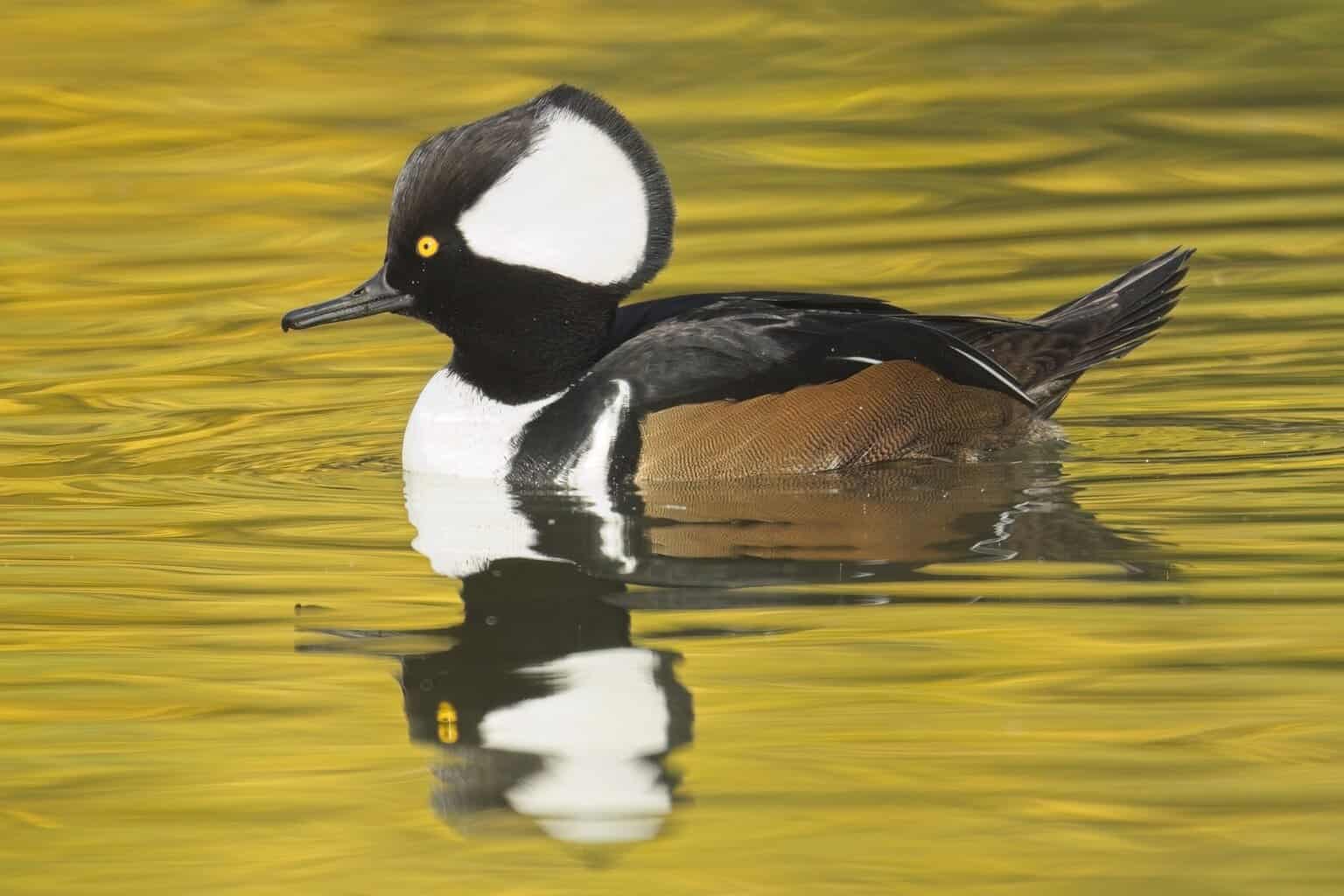
- Lophodytes cucullatus
- Length: 16 – 19 in (41 – 48 cm)
- Weight: 32.09 oz (909 g)
- Wingspan: 24 – 26 in (61 – 66 cm)
Mostly spotted in Nevada between October and April, these ducks are the smallest species of Merganser and the only ones that live entirely in North America.
Red-breasted Merganser
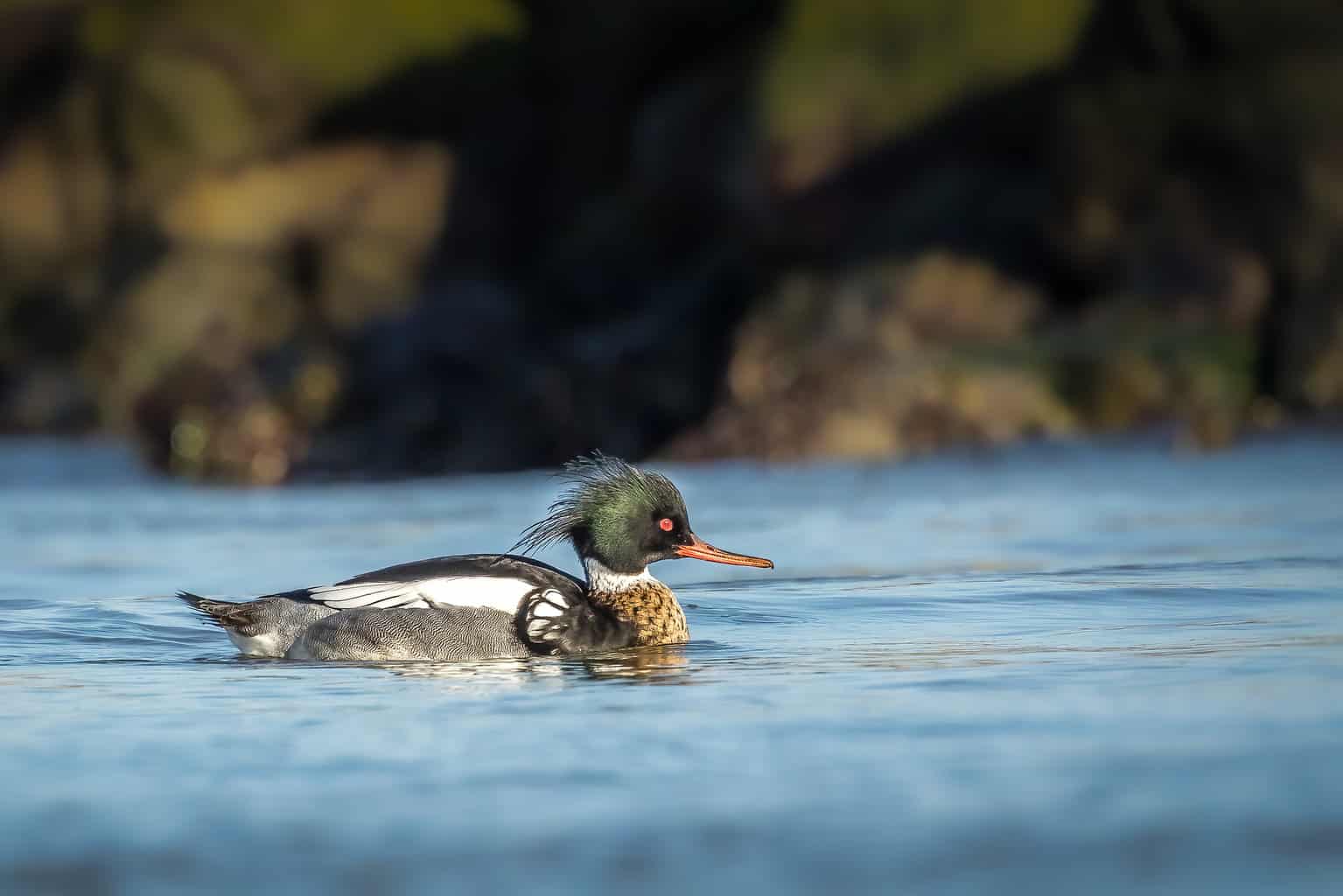
- Mergus serrator
- Length: 16 – 26 in (41 – 66 cm)
- Weight: 47.61 oz (1349 g)
- Wingspan: 31 – 35 in (79 – 89 cm)
These ducks are another winter resident in Nevada, typically seen here between November and April. They appear in 1% of birdwatchers’ checklists during this time.
Common Goldeneye
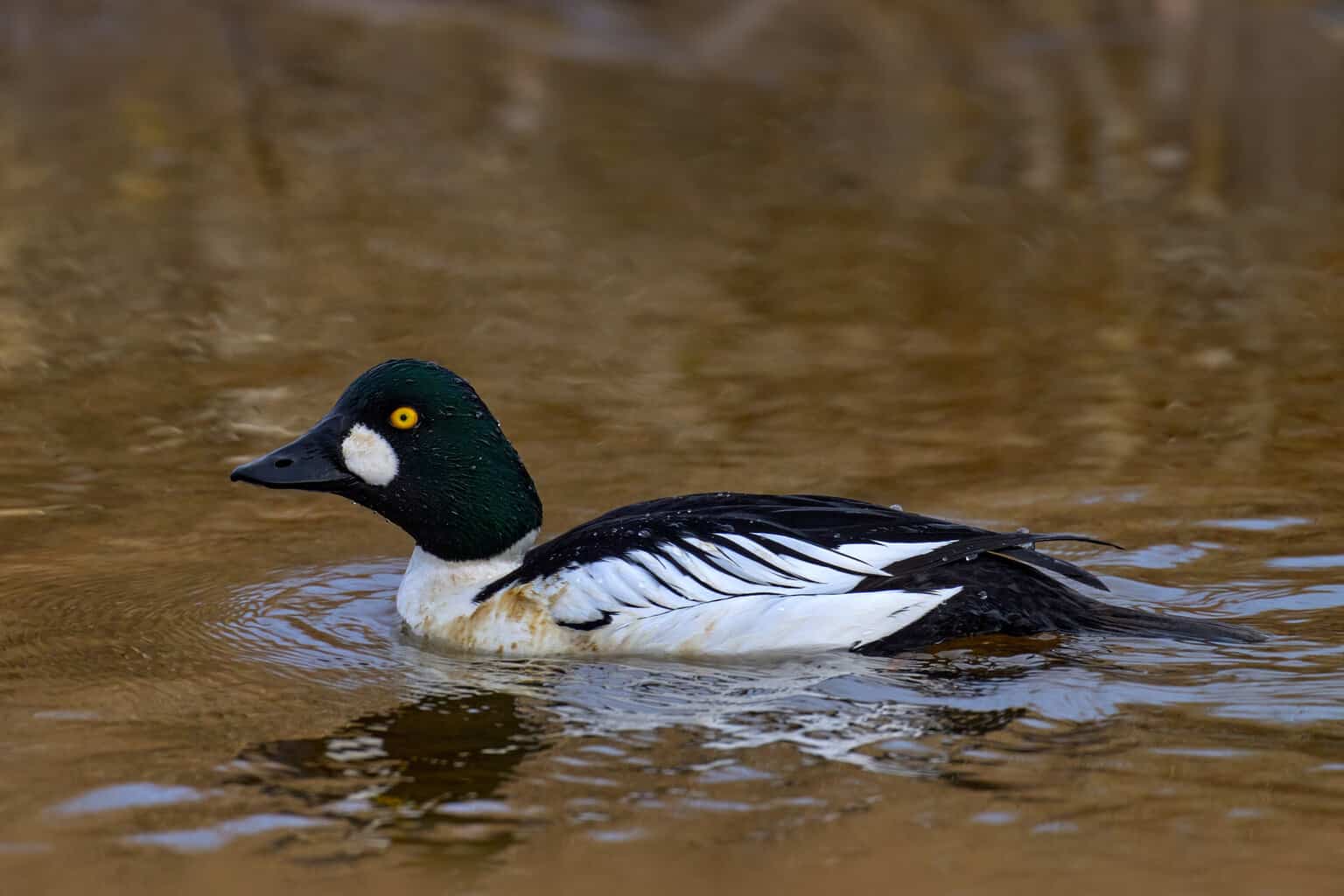
- Bucephala clangula
- Length: 15.8 – 20.1 in (40 – 51 cm)
- Weight: 21.2 – 45.9 oz (600 – 1300 g)
- Wingspan: 30.3 – 32.7 in (77 – 83 cm)
Another winter bird species encountered fairly commonly in Nevada is the common goldeneye. You are most likely to see them here between November and May, and they appear in around 1/10th of birdwatchers’ checklists at this time.
Of course, there are many other ducks to be seen in Nevada, but the above are some of the species that you are most likely to encounter.

